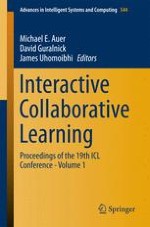2017 | OriginalPaper | Buchkapitel
Analysis of STEM Teaching – Most Common Strategies and Methods Enabling Deep Understanding and Interactive Learning Applied by Graduates of Technical Teacher Initial and Continuing Education Programs in Estonia
verfasst von : Tiia Rüütmann
Erschienen in: Interactive Collaborative Learning
Aktivieren Sie unsere intelligente Suche, um passende Fachinhalte oder Patente zu finden.
Wählen Sie Textabschnitte aus um mit Künstlicher Intelligenz passenden Patente zu finden. powered by
Markieren Sie Textabschnitte, um KI-gestützt weitere passende Inhalte zu finden. powered by
